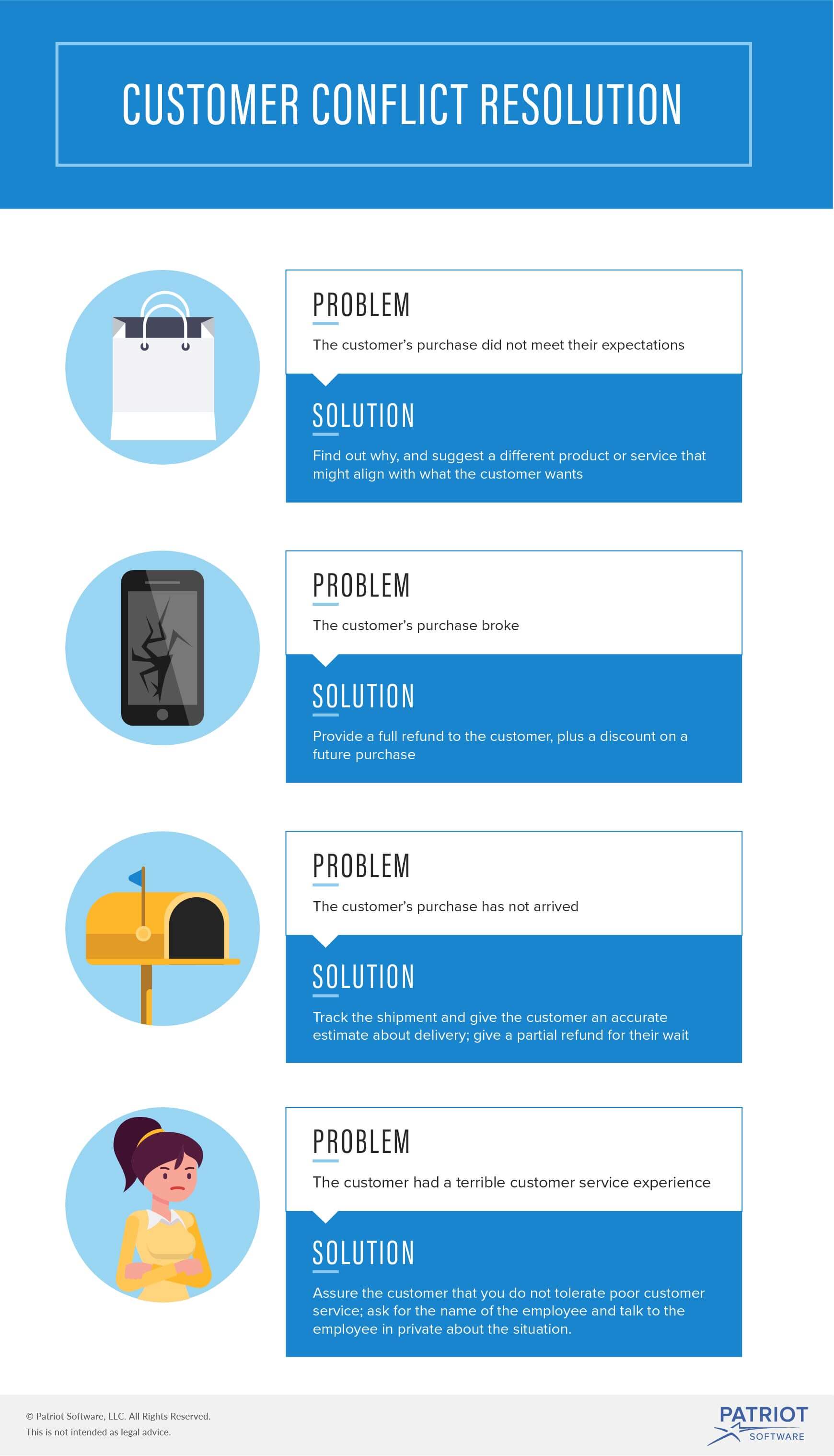When you own a business and deal with customers, conflict is bound to happen. We’ve all been there—an irate customer screaming into your phone or turning purple in front of the counter. And whether it’s your fault or not, knowing how to reach customer conflict resolution is imperative to your business’s reputation.
Reacting poorly to a customer complaint could end in permanently lost business. On the other hand, knowing how to resolve conflict can result in increased customer trust.
Customer conflict resolution steps
Handling conflict might not be your forte. But, knowing how to handle conflict at work is essential for smooth business operations. Try following these conflict resolution strategies to improve the way you deal with disgruntled customers.
1. Be humble
Even if the conflict is the customer’s fault, it’s important that you don’t take on a condescending attitude. Tell customers you are sorry for the misunderstanding or situation and assure them that you are going to do what you can to fix it.
It can be difficult to have humility when someone is arguing with you or verbally insulting you, but it’s essential to have in business.
Often times, having a humble demeanor will help the customer realize they’re being rude to you. They might calm down if they are angry. If they are already calm about a frustration, they probably will continue to be this way if are humble.
2. Don’t take it personally
For your own sanity and to prevent further conflict, do not take what the customer is saying personally. You might get defensive if you do.
When you deal with customers who direct their frustrations at you, it can be hard not to take it personally. But remember, they are upset with the problem, not you.
3. Understand the problem
Listening is the key to resolving conflict, and addressing customer complaints is no different. And when you listen, you need to make sure you understand what the customer is saying.
You might have already decided to refund the customer or give them a discount on future purchases. But if you tune out without truly understanding the issue, you subject your business to similar problems in the future.
Let customers vent before you try to clarify the problem. Try not to interrupt them if they are clearly upset.
To make sure you understand the problem, ask clarifying questions. You might say something like, “I just want to be sure I understand the problem—we didn’t fulfill X and Y?”
Asking the customer for clarification is especially important if they are listing off unrelated complaints. It can help you get to the root of the reason they’re upset. And, you can address one problem at a time.
4. Come up with solutions
When customers are upset, they want to know how you are going to handle the problem and fix it. Brainstorming and coming up with viable solutions is an important aspect of customer conflict resolution.
Tailor solutions to the customer and their specific problem. Don’t offer a universal solution for everyone who has conflict. For example, offering a refund might be necessary, but it shouldn’t be the only customer conflict resolution step you take.
Here are some reasons a customer might be upset, along with possible solutions:

Make sure the customer is OK with the solution you’ve suggested. Keep in mind that the customer might still be frustrated until they actually see the solution take place.
If it’s within your control, ensure the customer that you will do everything within your power to prevent the situation from happening again.
5. Follow up with the customer
After a conflict with a customer, let them know you haven’t forgotten. Reach out to them via email or phone to see if their issue has been resolved. And, ask if they have any other concerns. You might also tell them about updates in your business.
If a customer leaves your business following a conflict, ask what you can do to get their business back. You can ask exactly why they left after they have cooled down.
You can also keep in touch with customers throughout the year with email campaigns. Send out coupons, upcoming promotions, or business news. For example, if a sales tax holiday is coming up, you can remind customers and let them know about deals.
